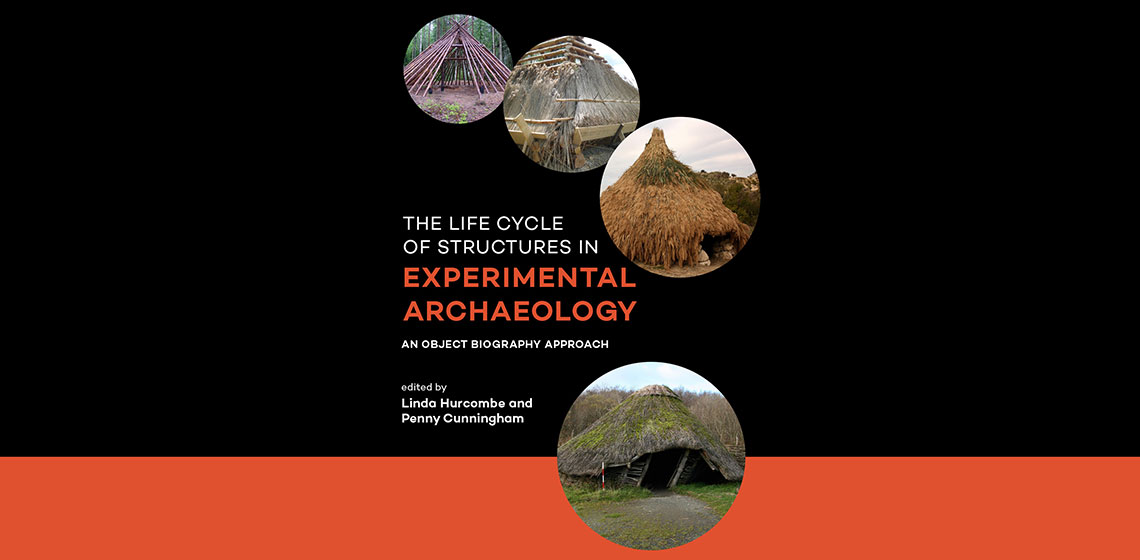
This book is made up of 16 papers that are a collection of results from a European Culture Project (OpenArch) that ran from 2010-2015. It was edited by Linda Hurcombe and Penny Cunningham. This work is dedicated to the late shipwright Brian Cumby, who was deeply involved with making replicas of several prehistoric boats. Accordingly, this book concerns itself with bridging the difficult gap between the present and the past. This is done with experimental archaeology in an attempt to create present replicas of past buildings, boats and associated structures.
The papers are well structured, and the reader is taken on a detailed journey through topics like construction, life in and around said structures and boats, and the abandonment of these. There is no focus on a specific prehistoric period, as the structures are replicas from the Neolithic to the Iron Age.
The main point of discussion in this study is about combining archaeological research, public outreach, and engagement. Additionally, how to properly fit life and lifecycles of these structures into narratives or biographies, in a way that that makes sense. The book works in many different scales, i.e. from the planning of the layout and building of an experimental structure to how elements in the structures work.
The theme in all the papers presented here is to understand the life cycle, from construction to abandonment, of replicas of archaeological structures. However, the paper by Triona Sørensen on replicas of early medieval roundhouses in Ireland highlights one of the most important points regarding building or using experimental structures, namely, that most structures are not lived in, but used only occasionally. In review of this fact, not many of the structures that are used in experimental archaeology can be said to give a true reflection of the life of a past archaeological structure. The everyday human-generated wear and tear that makes the realistic use pattern of these structures is simply not there. This does not mean that they are useless, but rather that we need to know the limit of research-based questions we can ask them. The motivation behind the construction of experimental structures can change over time, e.g. from being that of research and public museum engagement to that of a thing to display. In this way, some houses end up in their later life artificially supported with iron beams to keep them from natural decay and collapse.
One of the newest approaches to finding out about life in a prehistoric structure comes from the 13th paper in the book, written by Jannie Marie Christensen. In this paper an experiment is carried out inside a replica of a Viking age house from Hedeby. The focus is not only on the structure's ability to function as a house, but how healthy (or not) it is to live in this type of prehistoric house. It is considerations like these medical facts that make this paper particularly interesting.
In recent years, the narrative of dealing with archaeology in the scope of life biographies and itineraries has been increasingly popular (Joyce and Gillespie 2015, Jones et al. 2016). This is probably because this way of understanding things makes archaeological replicas of structures and objects more tangible to both researches and the public. With this in mind, the present book underlines the importance of implementing public outreach to validate the shared cultural heritage on a local, regional and global scale. On many levels, the collection of papers offers a rich insight into exemplary experimental archaeology, as many of the authors behind this book have a long history of research in the field. This collection of papers will appeal to both the general public with an interest in the topic, but it also forms a good showcase of the state of research across -mainly- northern Europe to students in heritage related studies. I would recommend this book to anyone interested in experimental archaeology or the biography of archaeological structures. This is a great book that underlines the important multifaceted role that experimental archaeology has in understanding the way structures were built, lived in and abandoned in prehistory.
Book information:
HURCOMBE, L. & CUNNINGHAM, P. (eds), 2016. The Life Cycle of Structures in Experimental Archaeology. An Object Biography Approach, Leiden: Sidestone Press, ISBN: 9789088903656.

Bibliography
JONES, A. M., DÍAZ-GUARDAMINO, M., CRELLIN, R. J., and MEIRION JONES, A., 2016. From Artefact Biographies to ‘Multiple Objects’: A New Analysis of the Decorated Plaques of the Irish Sea Region From Artefact Biographies to ‘Multiple Objects’: A New Analysis of the Decorated Plaques of the Irish Sea Region. Norwegian Archaeological Review [online], 49 (2), 1–21.
JOYCE, R. A. and GILLESPIE, S. D., 2015. Things in Motion. In: Joyce, R. A. and Gillespie, S. D., eds. Things in Motion - Objects Itineraries in Anthropological Practice. Santa Fe: SAR Press.